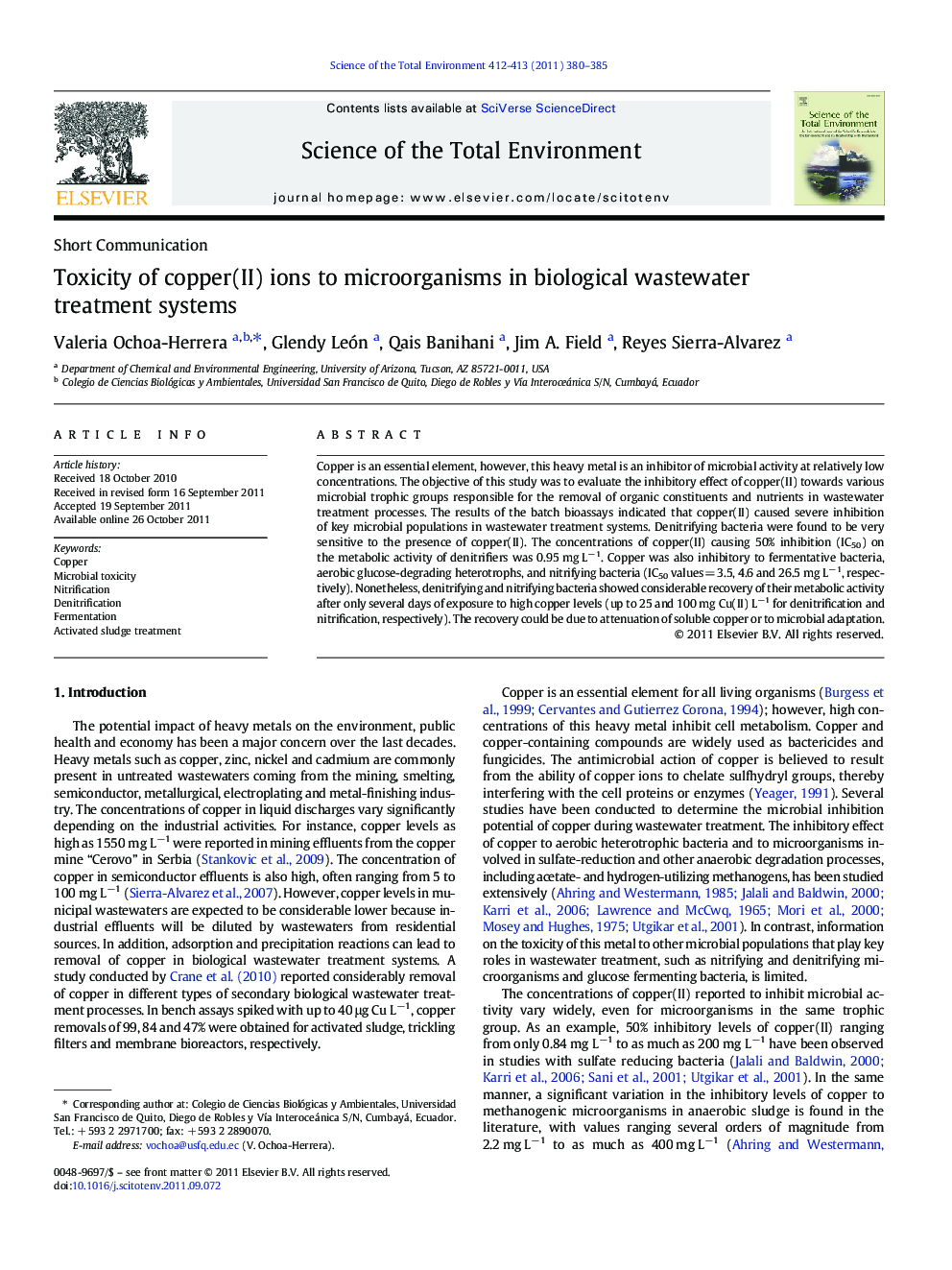| Article ID | Journal | Published Year | Pages | File Type |
|---|---|---|---|---|
| 4429736 | Science of The Total Environment | 2011 | 6 Pages |
Copper is an essential element, however, this heavy metal is an inhibitor of microbial activity at relatively low concentrations. The objective of this study was to evaluate the inhibitory effect of copper(II) towards various microbial trophic groups responsible for the removal of organic constituents and nutrients in wastewater treatment processes. The results of the batch bioassays indicated that copper(II) caused severe inhibition of key microbial populations in wastewater treatment systems. Denitrifying bacteria were found to be very sensitive to the presence of copper(II). The concentrations of copper(II) causing 50% inhibition (IC50) on the metabolic activity of denitrifiers was 0.95 mg L−1. Copper was also inhibitory to fermentative bacteria, aerobic glucose-degrading heterotrophs, and nitrifying bacteria (IC50 values = 3.5, 4.6 and 26.5 mg L−1, respectively). Nonetheless, denitrifying and nitrifying bacteria showed considerable recovery of their metabolic activity after only several days of exposure to high copper levels (up to 25 and 100 mg Cu(II) L−1 for denitrification and nitrification, respectively). The recovery could be due to attenuation of soluble copper or to microbial adaptation.
